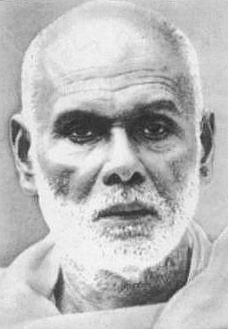Ezhava
Ezhava is a community predominantly based in the Kerala state of India, with a diaspora in other states and countries. Traditionally, they have been involved in occupations such as toddy tapping, agriculture, and ayurvedic medicine. Over the years, the Ezhava community has made significant strides in various fields including education, politics, and social reform, contributing notably to the cultural and socio-economic development of Kerala.
History[edit | edit source]
The origins of the Ezhava community are subject to various theories. Some historians suggest that they are descendants of the original inhabitants of India, with their history in Kerala dating back to many centuries. The community has faced social discrimination and was classified among the lower strata in the traditional Kerala caste system. However, the 20th century witnessed a remarkable social transformation within the community, much of which can be attributed to the efforts of reformers like Sree Narayana Guru, who championed the cause of social equality and upliftment of the downtrodden.
Social Reform Movement[edit | edit source]
The Ezhava community played a pivotal role in the social reform movements in Kerala. Sree Narayana Guru, a spiritual leader and social reformer from the community, propagated the message of "One Caste, One Religion, One God for All" (Oru Jati, Oru Matham, Oru Daivam Manushyanu). He established temples that were open to all, irrespective of caste, and advocated for educational and economic development as means to social upliftment. His teachings and efforts led to significant changes in the social fabric of Kerala, reducing caste-based discrimination and improving the status of the Ezhava community and other marginalized groups.
Occupations and Economic Contributions[edit | edit source]
Traditionally, the Ezhavas were engaged in occupations such as toddy tapping, which involves collecting the sap of palm trees to produce toddy, a local alcoholic beverage. They were also involved in agriculture, martial arts (Kalaripayattu), and traditional medicine, particularly Ayurveda. With the advent of modern education and social reforms, the community diversified into various other professions and has made significant contributions to the fields of politics, literature, arts, and science.
Cultural Contributions[edit | edit source]
The Ezhava community has a rich cultural heritage, contributing significantly to the arts and literature of Kerala. They have been instrumental in popularizing traditional art forms such as Theyyam and Kalaripayattu, the latter being one of the oldest fighting systems in existence. In literature, members of the community have made notable contributions in both Malayalam and English, enriching the literary landscape of Kerala and beyond.
Political Involvement[edit | edit source]
Members of the Ezhava community have been active in the political arena, advocating for social justice, equality, and the rights of the marginalized. They have played significant roles in various political parties and movements, contributing to the shaping of modern Kerala's political landscape. The community's support has been pivotal in the success of many political entities in the state.
Current Status[edit | edit source]
Today, the Ezhava community is an integral part of Kerala's social, cultural, and economic spheres. While they have made considerable progress in various fields, issues related to social equality and representation continue to be areas of concern. The community's journey from a marginalized group to a significant contributor to the state's development is a testament to their resilience and the transformative power of social reform.
Search WikiMD
Ad.Tired of being Overweight? Try W8MD's physician weight loss program.
Semaglutide (Ozempic / Wegovy and Tirzepatide (Mounjaro / Zepbound) available.
Advertise on WikiMD
|
WikiMD's Wellness Encyclopedia |
| Let Food Be Thy Medicine Medicine Thy Food - Hippocrates |
Translate this page: - East Asian
中文,
日本,
한국어,
South Asian
हिन्दी,
தமிழ்,
తెలుగు,
Urdu,
ಕನ್ನಡ,
Southeast Asian
Indonesian,
Vietnamese,
Thai,
မြန်မာဘာသာ,
বাংলা
European
español,
Deutsch,
français,
Greek,
português do Brasil,
polski,
română,
русский,
Nederlands,
norsk,
svenska,
suomi,
Italian
Middle Eastern & African
عربى,
Turkish,
Persian,
Hebrew,
Afrikaans,
isiZulu,
Kiswahili,
Other
Bulgarian,
Hungarian,
Czech,
Swedish,
മലയാളം,
मराठी,
ਪੰਜਾਬੀ,
ગુજરાતી,
Portuguese,
Ukrainian
Medical Disclaimer: WikiMD is not a substitute for professional medical advice. The information on WikiMD is provided as an information resource only, may be incorrect, outdated or misleading, and is not to be used or relied on for any diagnostic or treatment purposes. Please consult your health care provider before making any healthcare decisions or for guidance about a specific medical condition. WikiMD expressly disclaims responsibility, and shall have no liability, for any damages, loss, injury, or liability whatsoever suffered as a result of your reliance on the information contained in this site. By visiting this site you agree to the foregoing terms and conditions, which may from time to time be changed or supplemented by WikiMD. If you do not agree to the foregoing terms and conditions, you should not enter or use this site. See full disclaimer.
Credits:Most images are courtesy of Wikimedia commons, and templates Wikipedia, licensed under CC BY SA or similar.
Contributors: Prab R. Tumpati, MD






